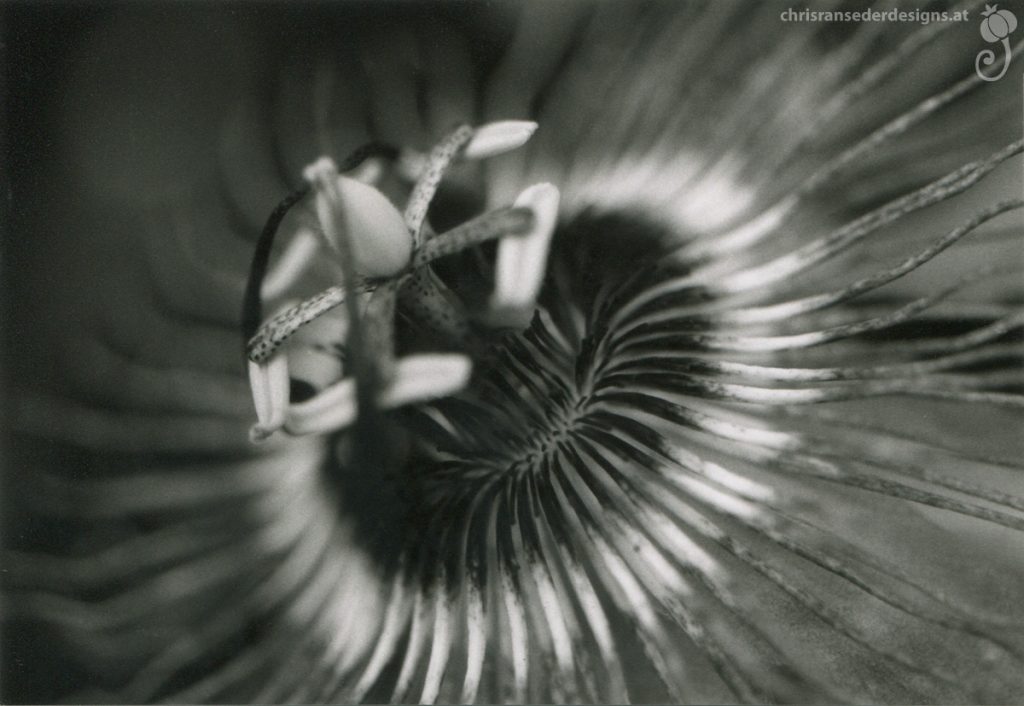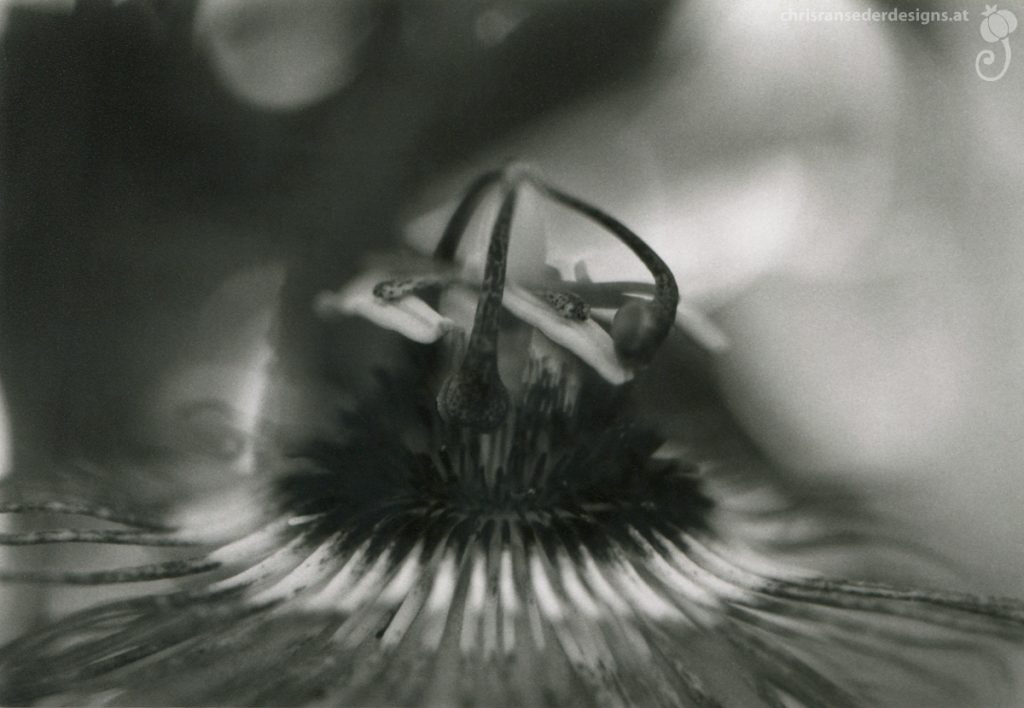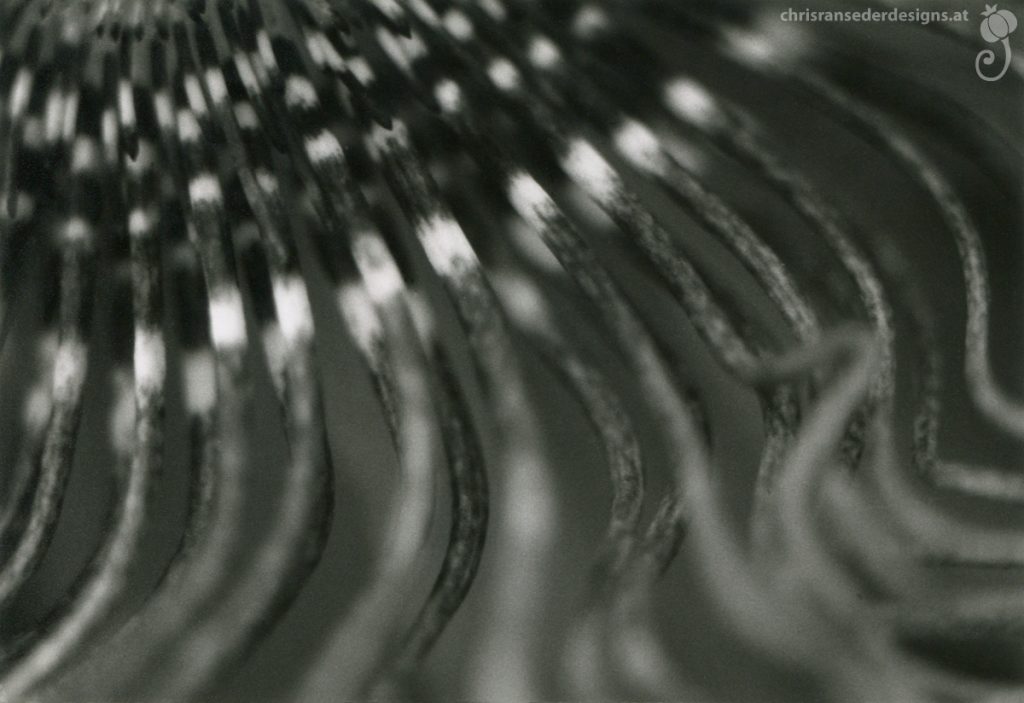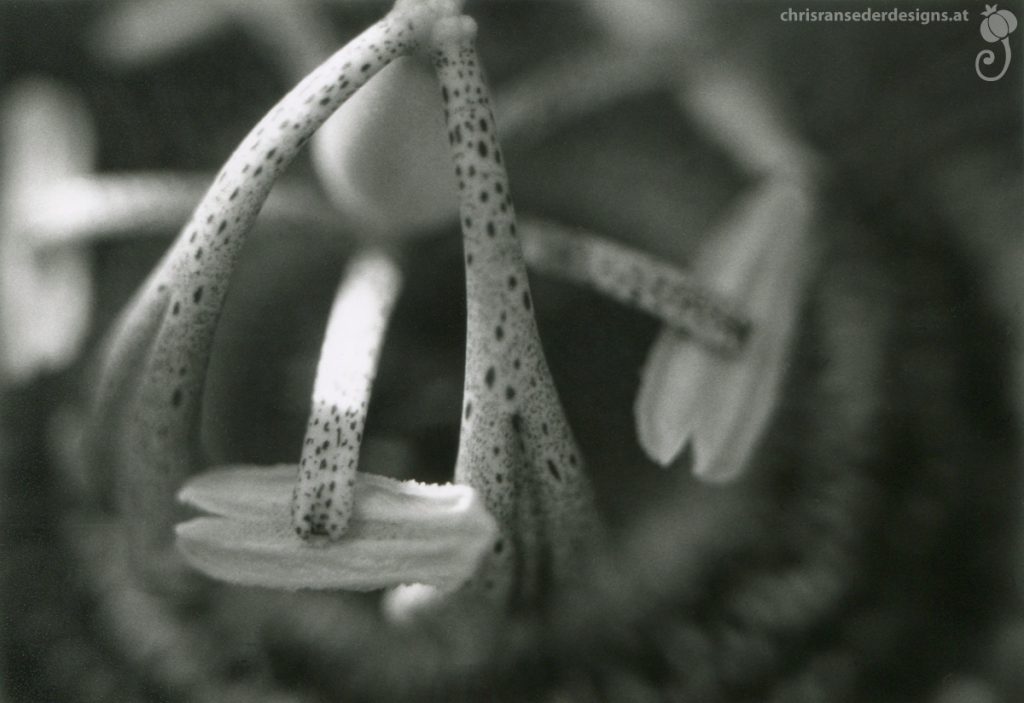Mirror, mirror on the wall who is the weirdest of them all? In my opinion that would be the Tacca, closely followed by the passionflower. The latter is the more interesting of the two, not least because of its symbolical connotations. Native to South America, the passionflower was discovered in the 16th century and fired the imagination of those who first wrote about it. The different parts of the flower were made to represent the Passion of Christ. The three stigmas were interpreted as the Nails, the five stamens as the five Wounds, the corona filaments as the Crown of Thornes. The corolla became the ten apostles present at the crucifixion, and so on. Illustrators, who never laid eyes on a living plant, depicted the flower accordingly.
In 1619/20 a passionflower flowered for the first time in Europe – not in Spain, as one would expect, but in the Farnese Gardens in Rome, Italy. Today the passionflower, once a coveted exotic, can be found in gardens all over Europe. I once bought a specimen as a houseplant at a local supermarket and to my delight it flowered copiously (until it succumbed to a plant disease). My potted plant never produced edible fruit though.
Wherever I happen to see a passionflower I try to capture its surreal beauty with my camera. Sometimes black and white really is the best.






Wink´ doch mit deinen Tentakeln
Spieglein, Spieglein an der Wand, wer ist die Seltsamste am Blumenstand? Meiner Meinung nach wäre das die Tacca, dicht gefolgt von der Passionsblume, die auch die Interessantere der beiden ist. Schließlich kann sie mit einer schwerwiegenden symbolischen Bedeutung aufwarten. In Südamerika heimisch, wurde die Passionsblume im 16. Jahrhundert entdeckt und beflügelte von Beginn an die Fantasie der Berichterstatter. Die unterschiedlichen Teile der Blüte wurden mit der Passion Christi gleichgesetzt. Die drei Narben interpretierte man als Kreuznägel, die fünf Staubgefäße als die fünf Wunden, die Fäden der Nebenkrone als die Dornenkrone. Die Blätter der Blumenkrone standen für die bei der Kreuzigung anwesenden Apostel, und so weiter. Illustratoren stellten die Pflanze dementsprechend dar, schließlich hatten sie nie ein lebendes Exemplar gesehen.
In Europa blühte eine Passionsblume zum ersten Mal 1619/20 – nicht, wie man annehmen könnte, in Spanien sondern in den Farnesinischen Gärten in Rom. Heute blüht das einst als Exot begehrte Gewächs in vielen europäischen Gärten. Ich habe einmal eine Passionsblume als Zimmerpflanze in einem Supermarkt gekauft und sie blühte zu meiner großen Freude üppig (bis eine Pflanzenkrankheit sie dahinraffte). Meine Topfpflanze trug allerdings nie eßbare Früchte.
Wo und Wann auch immer ich zufällig eine Passionsblume sehe, versuche ich die surreale Schönheit der Blüten mit meiner Kamera festzuhalten. In Schwarz/Weiß sind die Bilder doppelt so ausdrucksstark.

